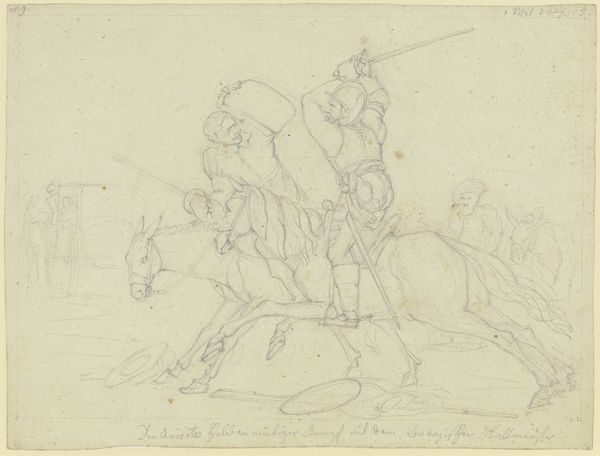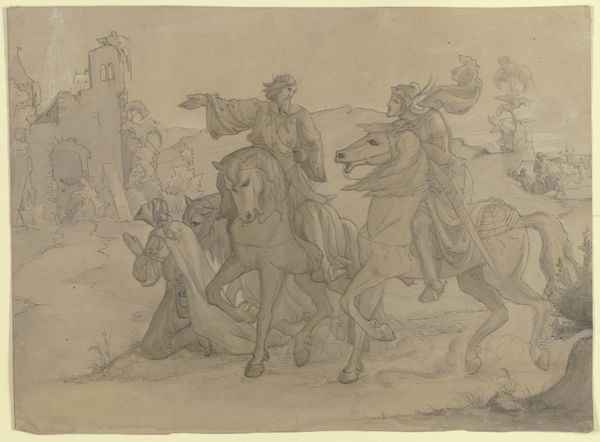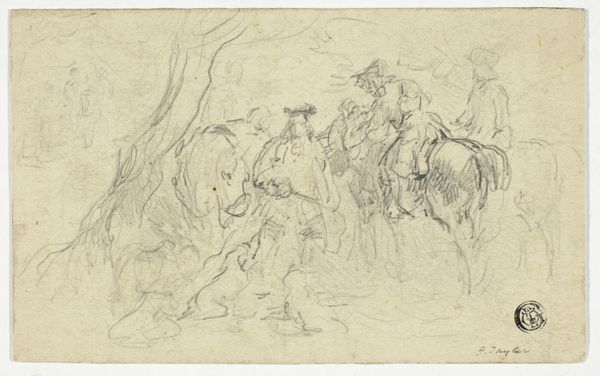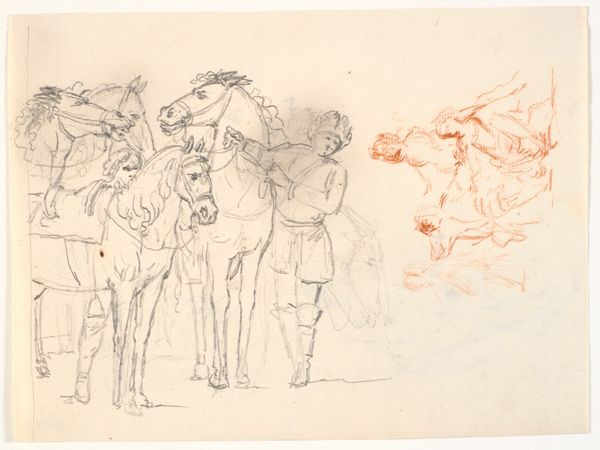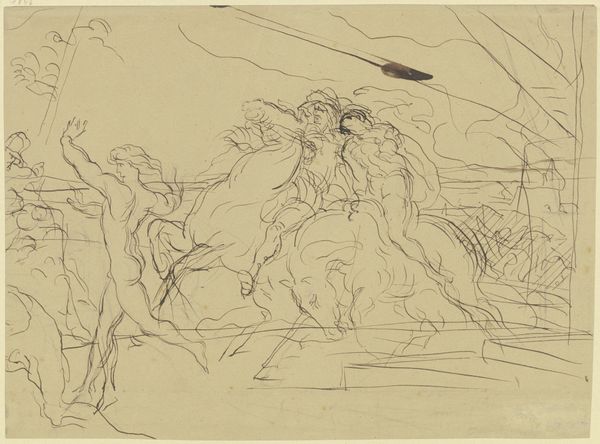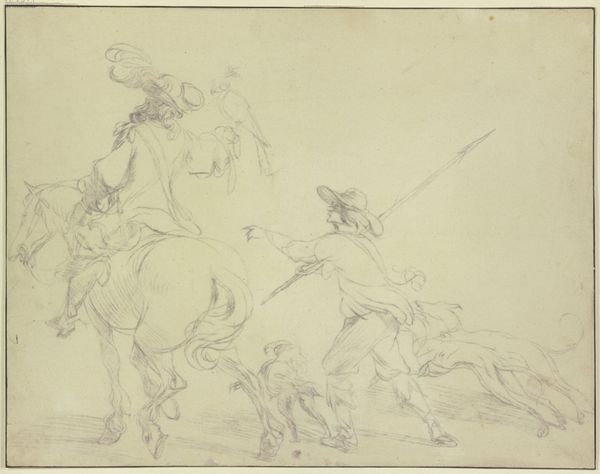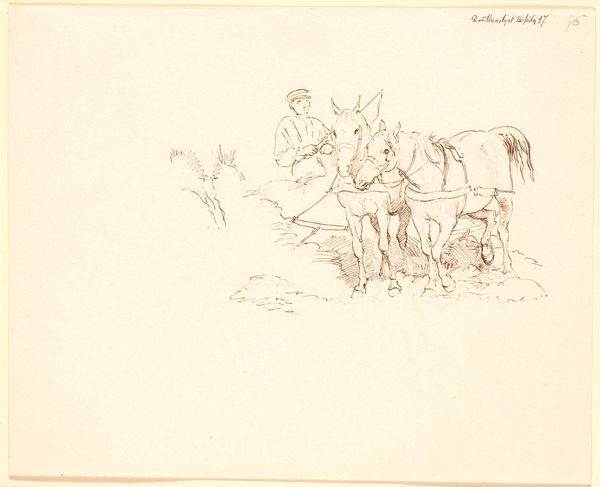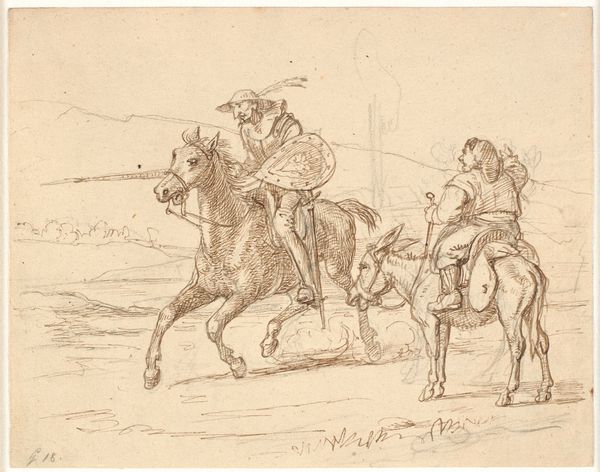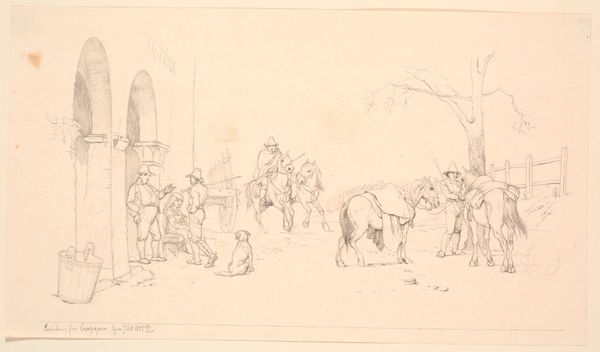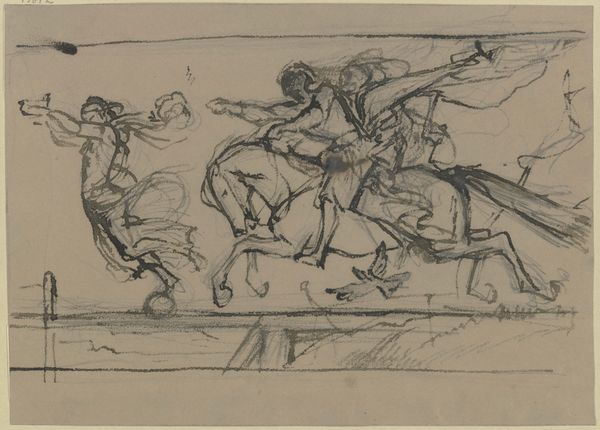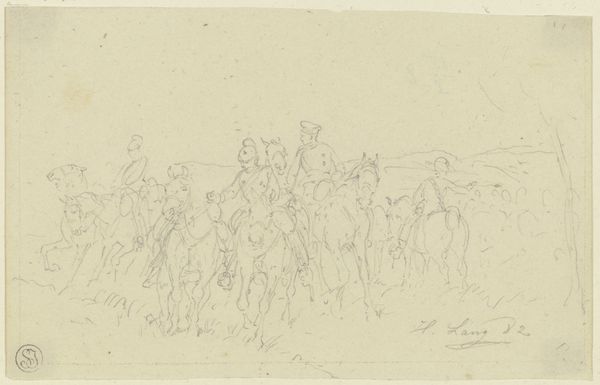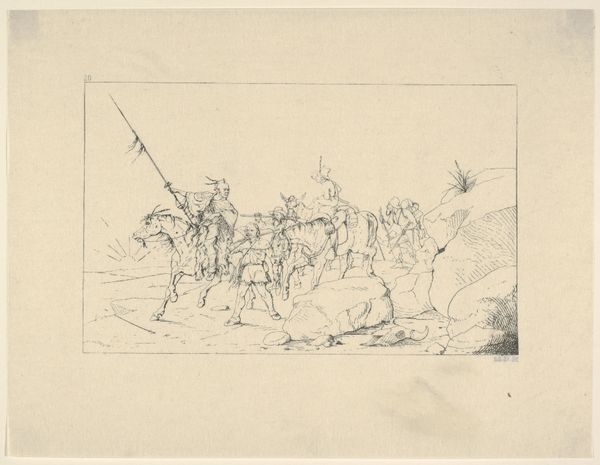
drawing, pencil
#
drawing
#
landscape
#
figuration
#
romanticism
#
pencil
Dimensions: 131 mm (height) x 210 mm (width) (bladmaal)
Curator: We’re looking at "Gefion pløjer fjeldet ud i havet," or "Gefion plowing the field into the sea," a pencil drawing by Wilhelm Marstrand, created sometime between 1810 and 1873. It's currently housed at the SMK, the National Gallery of Denmark. Editor: It’s a sketch, and an evocative one at that. There's such raw energy captured in those lines, especially in the figures of the oxen and the goddess—all action, like the drawing itself is about to burst off the page. Curator: Exactly. Marstrand is depicting the Norse myth of Gefion, a goddess who, in exchange for a night with the Swedish king Gylfe, was granted as much land as she could plow in a day. She transformed her sons into oxen and carved out a huge chunk of land, creating the island of Zealand, where Copenhagen now stands. The historical and mythical underpinnings tie directly to the narratives of land rights, divine power, and gender. Editor: Thinking materially, look at the intense pressure of the pencil creating such deep indents! The rough strokes and hatching delineate muscle, power, land, and raw action—but the pencil strokes are on delicate paper. How can you create something so lasting, in concept, like a nation-state, with only graphite on paper? There is such a powerful intersection between process and product in this work, it feels potent to the modern viewer. Curator: That dichotomy speaks volumes. A seemingly simple medium wields immense power, reflecting Gefion’s ability to reshape the landscape and, by extension, societal structures. It mirrors the idea of women finding ways to exert influence in a world where traditional avenues of power were limited. We have this visual metaphor of creating change, where Marstrand makes commentary on themes of both gender and cultural creation. Editor: The drawing is incomplete, which underscores, to me, that act of production. Here we see labor at the scale of legend. There are visible erasures as part of the mythmaking on view here; erasures are the literal making-over and claiming of a space. It underscores that places, land, identity and even artwork itself are all created in iterative and contested acts. Curator: Agreed. It’s a powerful image because it layers mythological significance with relevant social commentary and critique, using a foundational story of Denmark itself to pose crucial questions of labor, gender and power structures. Editor: I find myself more struck now by the means of its making; a seemingly throwaway sketch, is anything but, underscoring to viewers the value of both concept, and the act of its becoming.
Comments
No comments
Be the first to comment and join the conversation on the ultimate creative platform.
